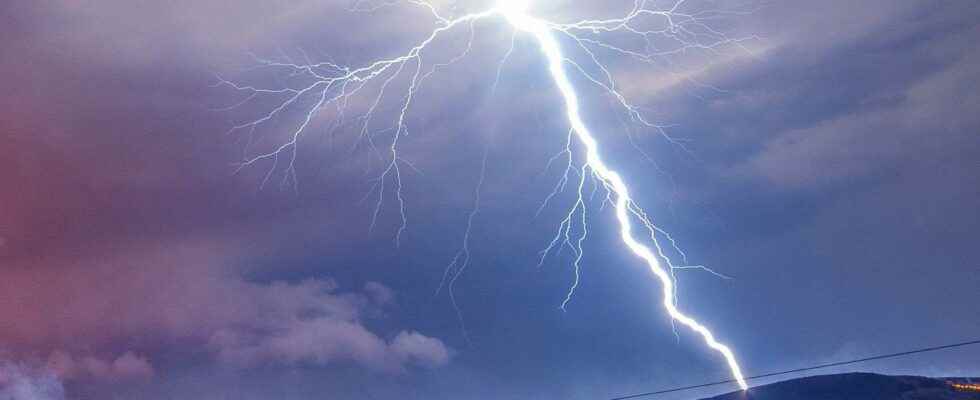Superbolts are lightning 1,000 times more powerful than conventional lightning, but also 1,000 times brighter. These “super lightnings” mainly occur above water, and in particular along the French coasts!
L’energy superbolts exceeds 1 million joules, sometimes much more; most lightning has a power of 1,000 joules. Superbolts are therefore also 1,000 times brighter than other lightning bolts. Just like regular lightning bolts, they can have a positive or negative charge. On the pictures of storm chasers, these “super flashes” appear as a sharp, ultra-bright horizontal line. Branched bolts (with branches) are less powerful because the energy is dispersed in the different “arms” of the bolt, whereas in superbolts it is concentrated in a single line.
Superbolts are more numerous in winter
The study of superbolts is very recent and the first were detected by a satellite in 1977. More recently, Washington University researchers recorded 2 billion lightning bolts between 2010 and 2018, including 8,000 superbolts. So a superbolt occurs for every 250,000 lightning bolts. While one might think that these superbolts occur mainly in spring and summer, during the two stormiest seasons of the year, superbolts actually occur mainly between November and February: this is when of the winter season that the most violent lightning occurs, including in France. They are much more numerous in the northern hemisphere, but surprisingly, take place at the same time of the year in both hemispheres despite different seasons.
A superbolt in Belgium in 2016, at 0:20 seconds on the video. © DeepStormChase
The French coastline is one of the areas hardest hit by superbolts
While 90% of lightning occurs over land, superbolts mostly occur over the ocean: in the northeast Atlantic, but also in the Mediterranean. They also occur along the Andes, in the Indian Ocean, south and west of Africa, and in the northern Pacific. They are found in large numbers on the coasts of western France: in our country, it is indeed in Brittany that lightning is the most powerful, despite their limited number. The reasons for this majority location above water are still poorly understood: scientists believe that it could be linked to the energy from the water, to sea salt which is an excellent electrical conductor, to ‘ocean acidification which leads to morehydrogen in the water, but also to the location of sunspots.
In France and Europe, superbolt lightning has occasionally made the news with awesome pictures, damage to roofs and blackout electric. Witnesses who were able to observe a “super flash” described a huge explosion noise and a flash luminous so intense that it could blur the sight for a few minutes.
Reading ideas for the summer with Futura?
To celebrate the start of the holidays, we offer you the Mag Futura at the preferential price of 15 € instead of 19 €, i.e. a reduction of 20% !
What is Mag Futura?
- Our first paper journal of more than 200 pages to make science accessible to as many people as possible
- 4 major scientific questions for 2022, from the Earth to the Moon
- Home delivery*
*Special offer valid until July 19. Delivery is made in France (excluding metropolitan France), Switzerland, Belgium.
Interested in what you just read?
